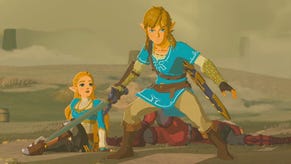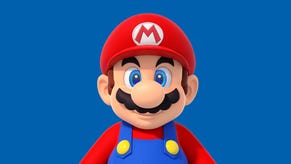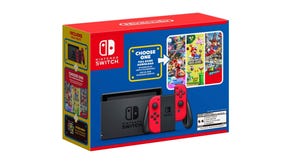How Super Mario Odyssey pushes Switch to its limits
Digital Foundry on the techniques used to create the most advanced Mario title yet.
It's been a long time since the release of Super Mario Sunshine, but for those eagerly awaiting a return to the series' 3D exploratory theme, Super Mario Odyssey is a superb follow-up. It's packed with interesting concepts, tight gameplay and sheer character - this is Nintendo delivering its A-game, a brilliant combination of fresh, bright ideas and exceptional technology.
Not only is this the first exploration-focused 3D Mario title in 15 years, it's also the first to run at 60fps on a portable console. It's an impressive feat but not without compromises. In fact, Super Mario Odyssey pushes the Switch hardware hard to the point where the quality of the presentation just about holds together, but it's safe to say that the seams are stretched to their limits in some scenarios.
We can talk about resolution and performance metrics - and they are key to the experience in many ways - but what shouldn't be overlooked are the smaller touches that demonstrate just how much care and attention has gone into this title. Taken individually they're cute but hardly revelatory, but together they help to build something more refined and cohesive.
For instance, if you roll down a hill, the developers apply a dirt texture layer to Mario but if you jump in a nearby pool of water, it's washed right off. Toss your cap at a hydrant and it spouts water, and Mario's dripping wet as a consequence. Or, while strolling through the city, Mario moves his head and eyes to look at environmental detail placed around the world.
Also, when Mario falls asleep while sitting still, he dreams about pasta. What's neat here is that he wakes up based on the gyro sensor in the Joy-con. Just pick up your pad and Mario hops back to his feet. He also shivers, and sweats based on the temperature of the environment. These are all small touches, but they add personality to the experience.
If we step back and look at the bigger picture, it becomes apparent that there's a lot of variety in this game. From a prehistoric island to a paradise built from sugar and sweets, or New Donk City itself, the amount of unique assets created for the game is certainly impressive. If Super Mario Sunshine was criticized for its repetitive island locales, Mario Odyssey is almost the direct opposite - but delivering these beautiful environments at 60 frames per second comes at a price.
For starters, there's animation at a distance. In some of the busier scenes with lots of characters on-screen, animation updates at a lower rate. At close range it's a full 60fps but back up a little and animations can drop to 30fps. Step back even further and it cuts down to 20. Fortunately, this only appears in select areas and it's primarily limited to New Donk City, but it's a familiar performance saving technique - animation is heavy on CPU, and dropping to half-rate is a technique we've also seen in Halo 5 and Destiny 2.
Resolution-wise, Super Mario Odyssey's solution in final code turns out to be much more complicated than we initially thought based on our recent preview hands-on. Back then, we pegged the game as running at 900p docked and 720p in portable mode - and when playing untethered, cutscenes appeared to render at 640x720. Prior to that all demos and media saw the in-development version operate at a basic 720p.
To put it simply, in the final game, Super Mario Odyssey uses two different display modes in handheld and docked modes. When docked, a dynamic resolution scaler is in effect. This is something that Nintendo has been dabbling with for years now, but Odyssey is more flexible than usual. Depending on the action, Odyssey ranges from a high-end at 1600x900 to lower resolutions like 1440x810 and even 1280x720. It doesn't often drop all the way down to 720p but the intermediate 810p is common in busy areas.
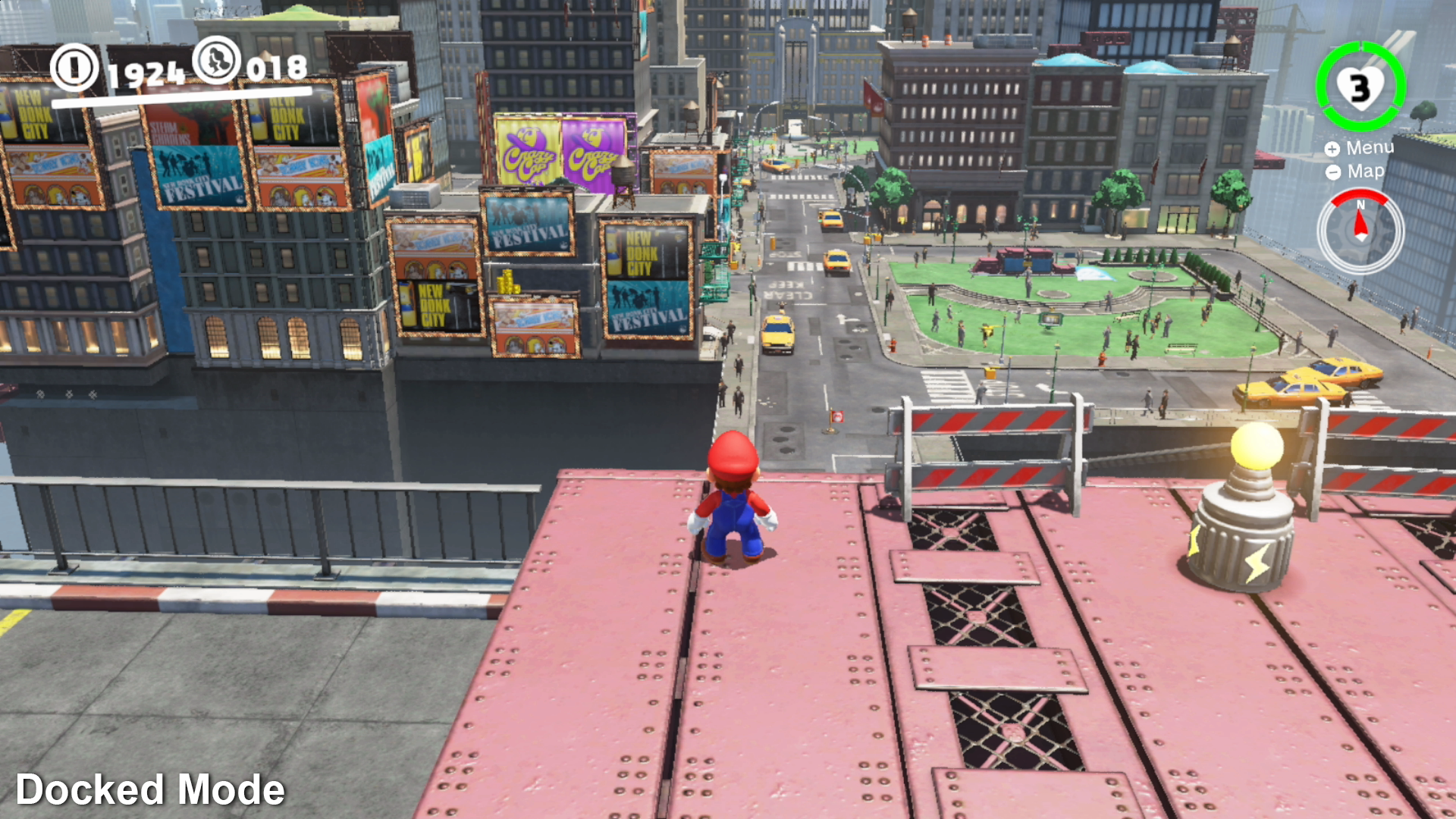
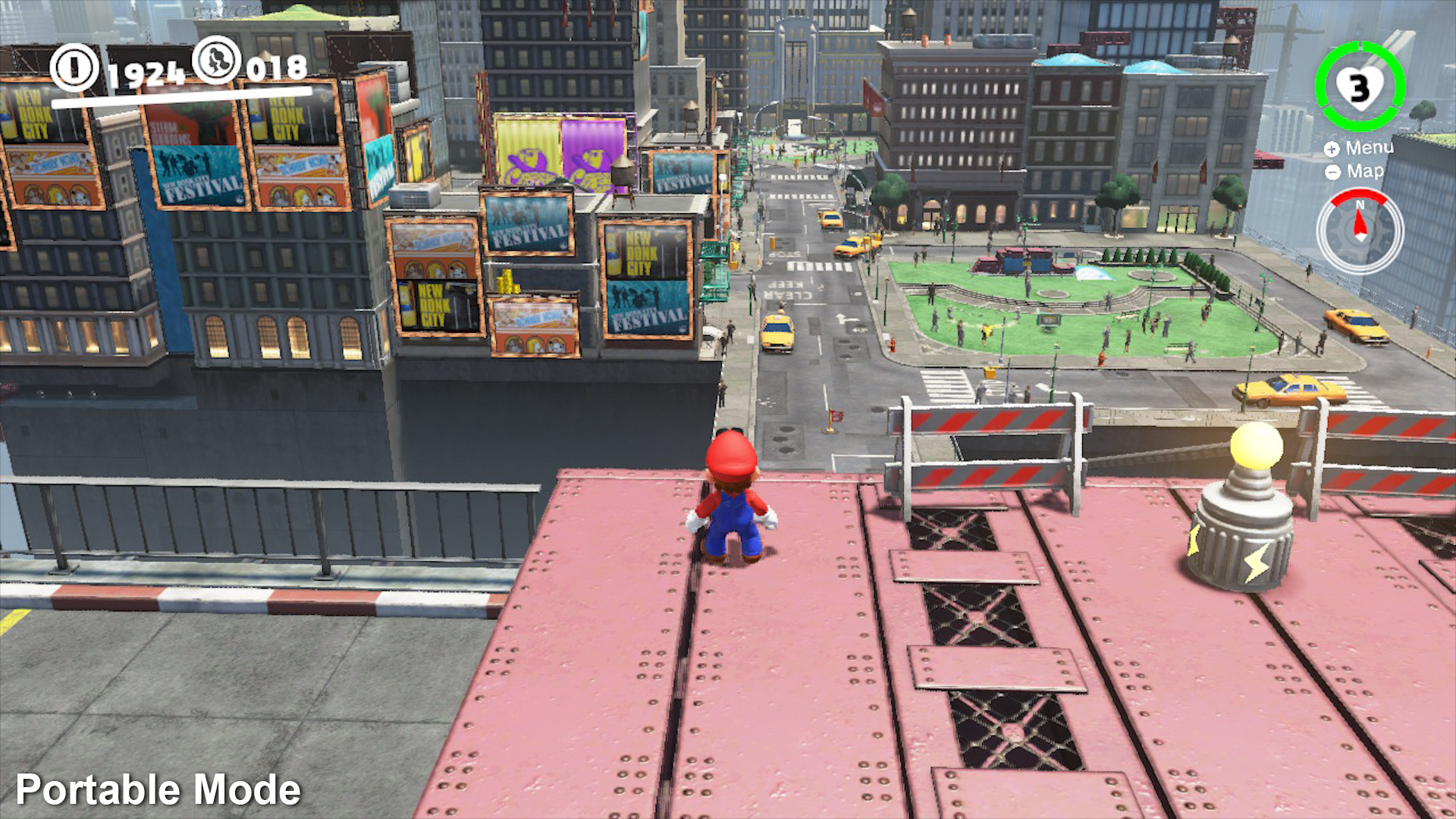

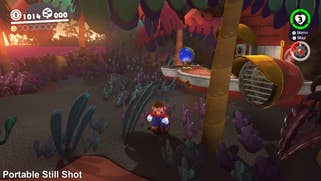

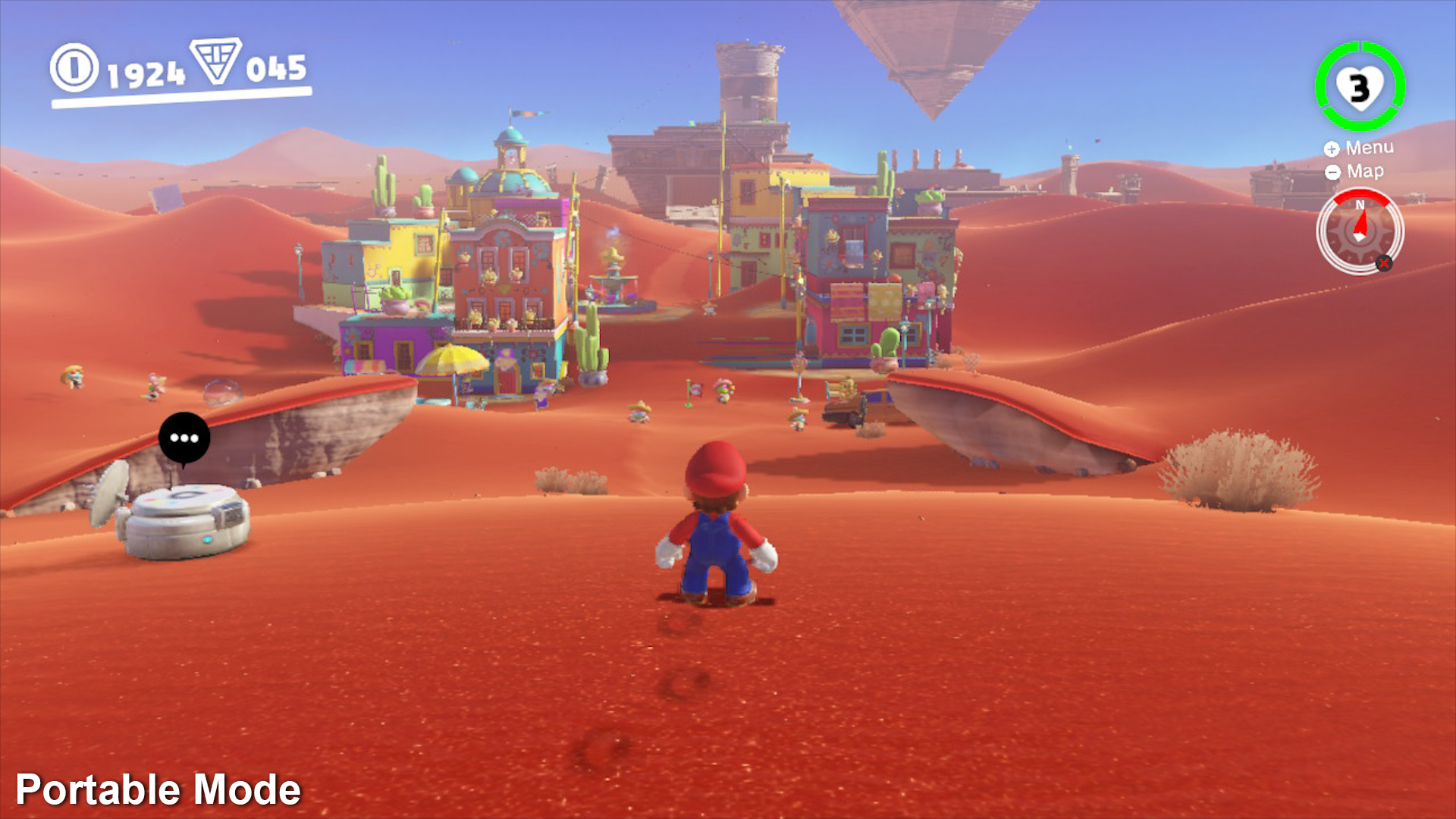
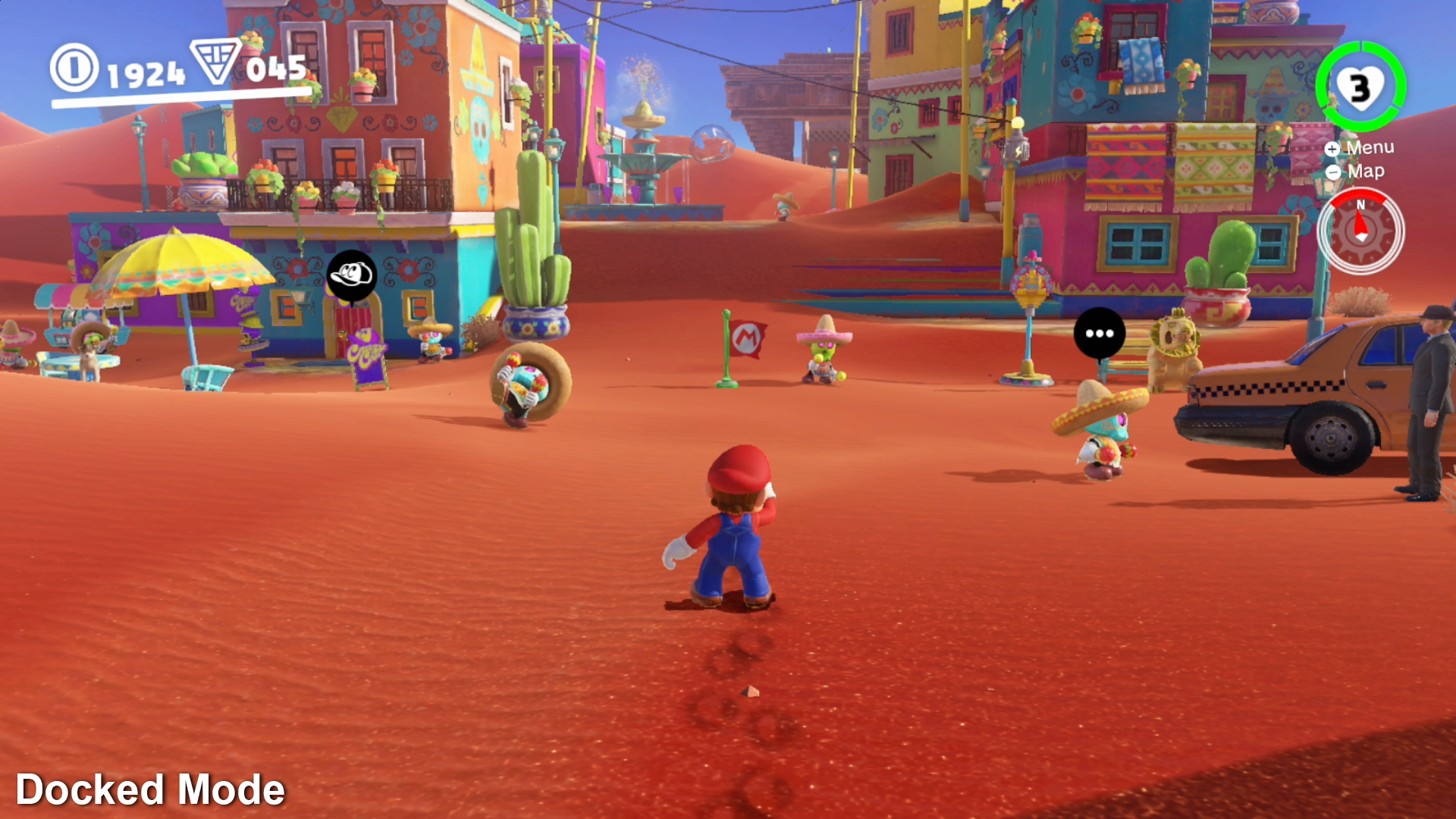

Then there's depth of field. In certain scenes, when turning the camera, depth of field renders out at what looks like quarter resolution. It's likely designed to accentuate camera motion but it's not impossible that we're looking at a performance saving measure too. In some ways, it reminds us of the multi-res shading featured in Shadow Warrior 2 on the PC in that some areas of the screen seem to be running at a lower resolution than others.
Portable mode is even more intriguing. When you stand still - as we did for our comparison shots from the last preview code we saw - the game presents a full 720p image, but the second you start moving, it becomes clear that the image isn't as stable as it should be. From what we can deduce, the game appears to jitter two 640x720 frames together to form a whole. And this explains why we thought cutscenes were running at this reduced resolution - when we took the snapshots for analysis, it clearly was.
But the evidence suggests that Odyssey is jittering two 640x720 images together all of the time. So in a completely static scene, we get the illusion of a full 720p image, but when Mario's idle animations kick in, our favourite plumber looks a little chunkier as he is in motion.
This leads us on to performance, which explains why Nintendo has been so aggressive with its image-related techniques. Super Mario Odyssey is designed to deliver a smooth, stable 60 frames per second experience no matter the cost - and it gets there at nearly all times. Most stages and encounters playback without issue, offering exactly the type of fluidity you'd expect from a Nintendo game, but it's not perfect and small pockets of slowdown do kick in occasionally - just minor little dips here and there that manifest as a small stutter.
But the key takeaway is that for the vast majority of gameplay, Super Mario Odyssey's performance level is buttery-smooth in both docked and portable mode. The price of 60fps in this instance is clear - Mario relies on an adaptive resolution, some draw distance tricks when lots of objects are used, loss of animation frames at range and more.





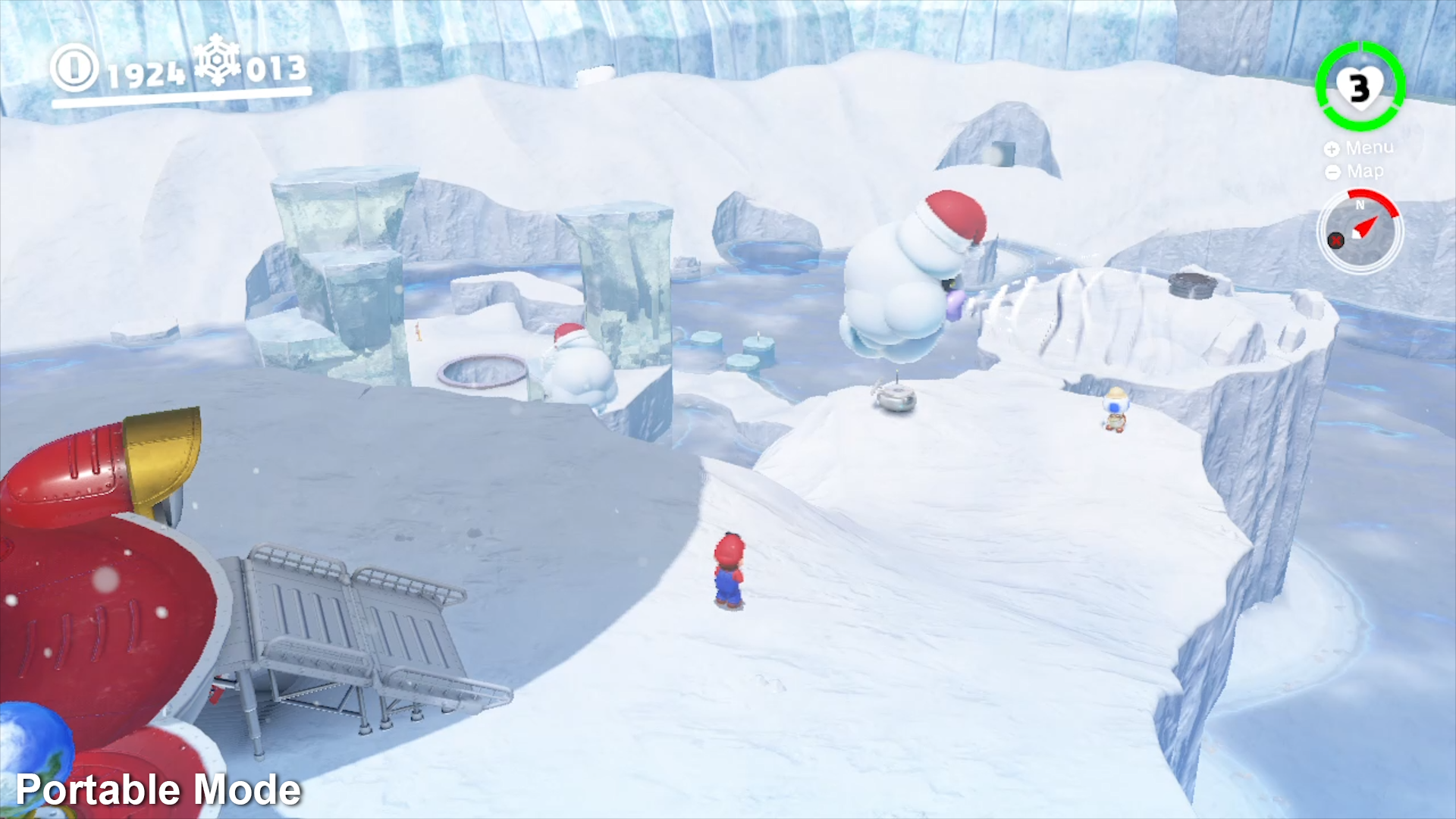
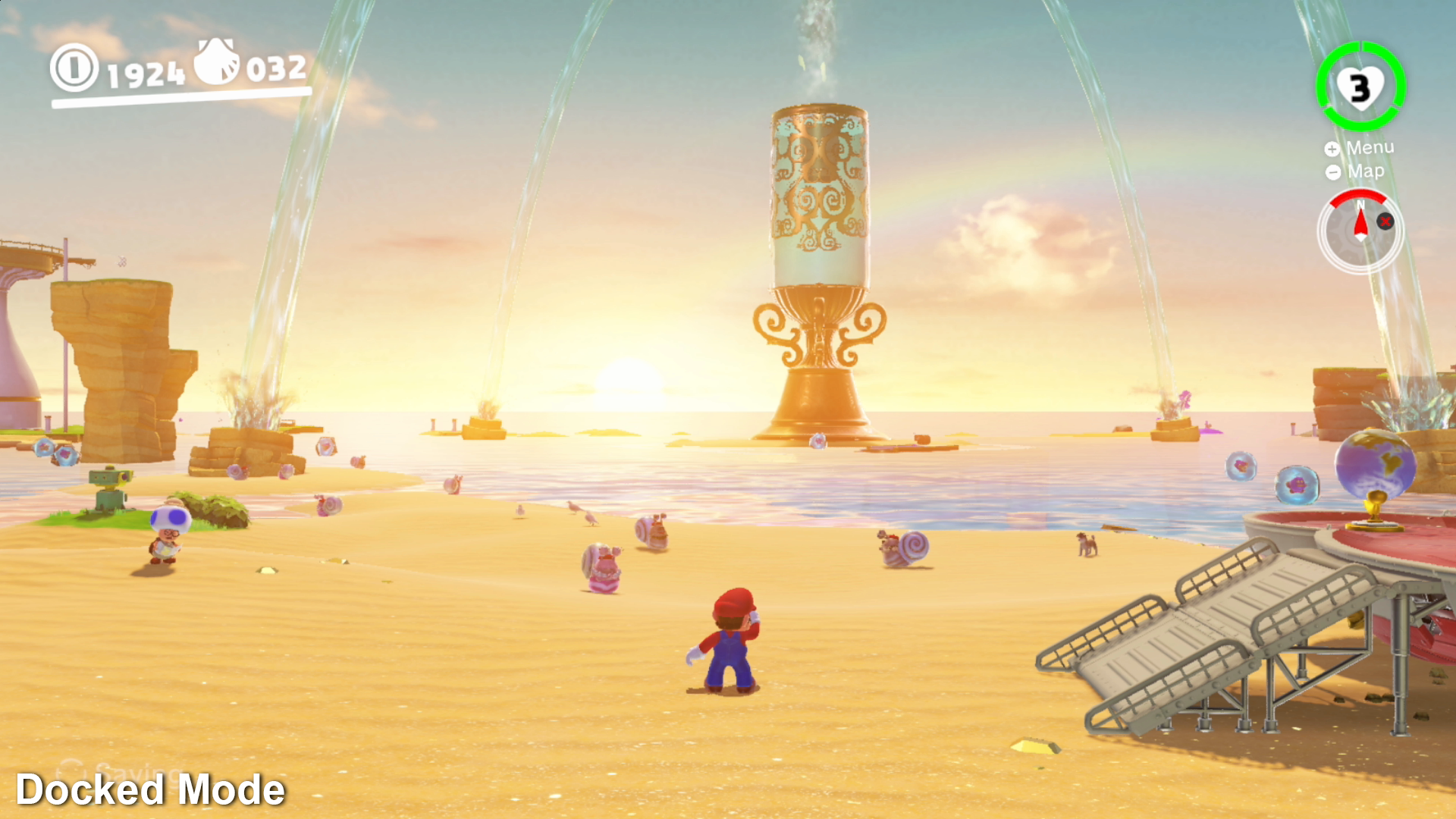
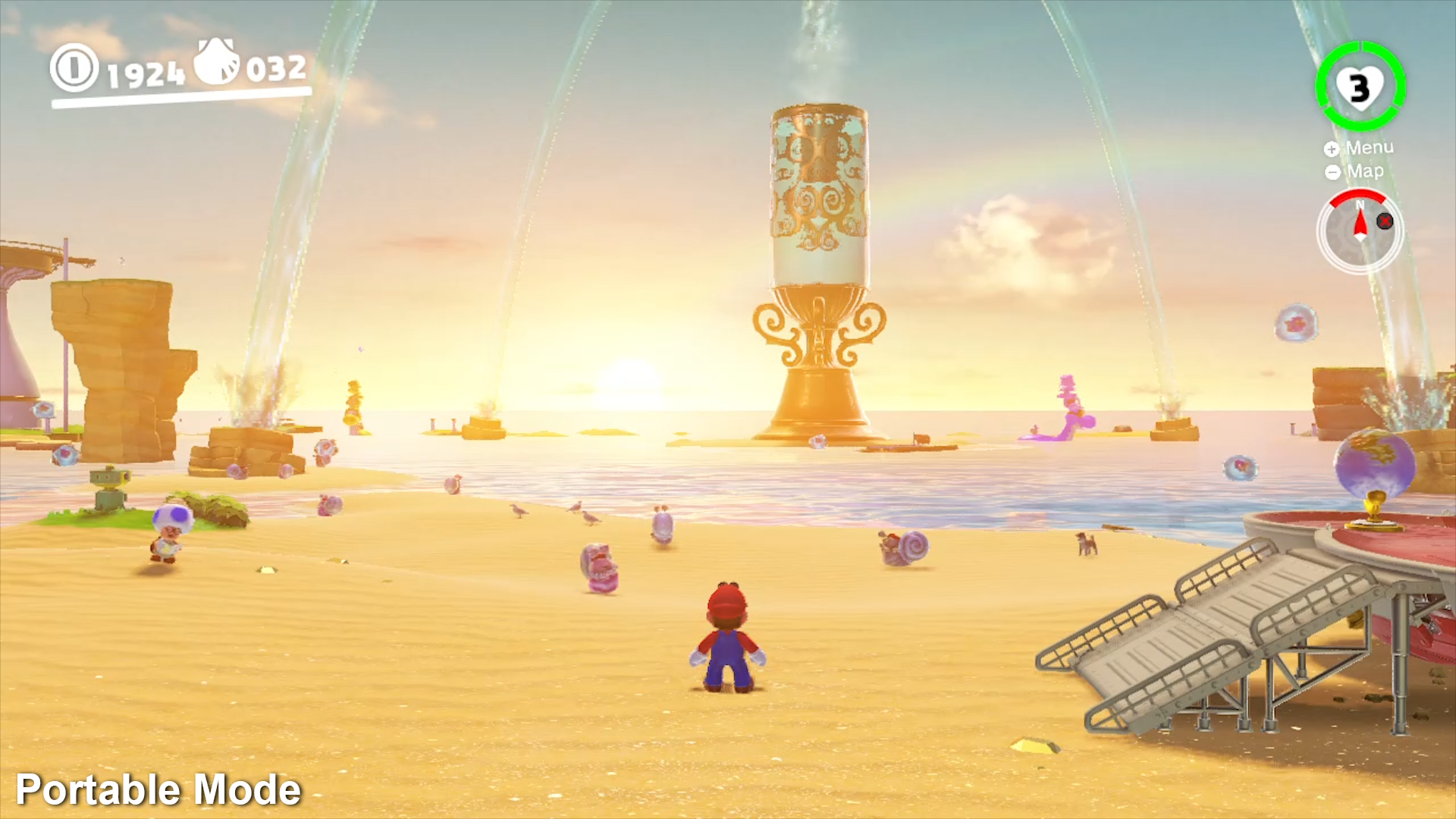
But it's the solution for mobile mode that we find most fascinating. When presented with a 50 per cent drop in GPU power undocked, a range of techniques are deployed to keep the game running at 60fps while keeping the vast bulk of the game's visuals intact. Lower precision shadows are in play and distant LOD detail is simplified, and then there's the 640x720 frame interpolation technique. In combination, all of these cutbacks would be noticeable on a conventional TV, but on a 6.2-inch mobile screen? It works, and you don't feel like you lose much moving from your HDTV to mobile mode. Crucially, you retain that 60fps action. In fact, our tests suggest that Super Mario Odyssey's rare performance dips in docked mode are actually lessened when gaming on the go.
Taken together then, the results are impressive. Keeping in mind the limitations inherent to the Switch hardware, Super Mario Odyssey feels like one of the best uses of its available power we've seen yet. Smart techniques are used to ensure that the core experience works well in both configurations, and the sense is that these measures allow the imagination and creativity of the game's designers to play out at full force whether you're at home and docked to your HDTV, or else out and about.
Super Mario Odyssey also continues Nintendo's 60 frames per second streak. Aside from Zelda, which runs at 30fps by design, every other game Nintendo has published on Switch delivers this optimal performance level. It's a great trend that guarantees a great experience in the short term, and for our money, helps games like this to stand the test of time.
And concluding our look at performance, we feel it's worth mentioning loading times - or rather the relative lack of them. Booting the game gives you a controller tutorial screen that jumps instantly to the main menu. Continuing your game from there is five seconds max, while in-game jumps between stages are even faster than that. If you miss the days of cartridge-style insta-loading, this is the game for you - Super Mario Odyssey is incredibly fast in this regard.
All told, this new release is another feather in Nintendo's cap. It's one of the most inspired Mario games in years and it runs like a dream. Only the lowest drops in the dynamic resolution set-up mar the presentation to a noticeable degree, and a stable 900p would have been great instead. However, the stability of its frame-rate is most important to the gameplay experience and Super Mario Odyssey delivers here. All told, this is a brilliant, unforgettable experience, and if you've not invested in a Switch yet, Mario's latest adventure is a great jumping on point.







